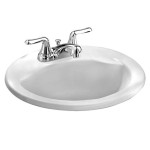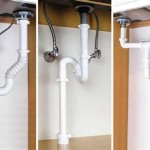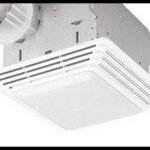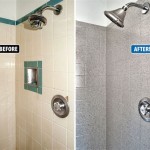Stone Top Bathroom Vanity Units: A Comprehensive Guide
Stone top bathroom vanity units have become increasingly popular in recent years, prized for their durability, aesthetic appeal, and ability to elevate the overall design of a bathroom. These units combine the functionality of a vanity with the elegance of a natural or engineered stone countertop, creating a focal point that can significantly enhance the value and enjoyment of a home. This article provides a detailed overview of stone top bathroom vanity units, covering their various aspects from material choices to installation considerations.
Understanding the Appeal of Stone Countertops
The primary draw of a stone top bathroom vanity unit lies in the inherent qualities of the stone itself. Natural stone, such as granite, marble, and quartz, offers a unique and luxurious aesthetic that is difficult to replicate with synthetic materials. Each slab of natural stone possesses its own distinct veining, patterns, and color variations, ensuring that every vanity is a one-of-a-kind piece. Beyond aesthetics, stone countertops are known for their exceptional durability. They are resistant to scratches, stains, heat, and moisture – common challenges in a bathroom environment. This resistance translates to a longer lifespan and reduced maintenance requirements compared to other countertop materials.
Furthermore, stone countertops contribute to a sense of permanence and quality. They are perceived as a high-end feature that can increase the perceived value of a bathroom during resale. The smooth, cool surface of stone also provides a tactile appeal, adding to the overall sensory experience of using the bathroom.
Exploring Different Stone Options for Vanity Tops
The market offers a wide range of stone options for bathroom vanity tops, each with its own set of characteristics, advantages, and disadvantages. Understanding these differences is crucial for making an informed decision that aligns with budgetary constraints, aesthetic preferences, and performance expectations.
Granite: One of the most widely used natural stones, granite is renowned for its strength, durability, and resistance to scratching and staining. It is available in a vast array of colors and patterns, making it a versatile choice for various bathroom styles. Granite's porous nature, however, necessitates sealing to prevent the absorption of liquids and potential staining. Regular resealing is recommended to maintain its protective properties. While granite is resistant to heat, it is still advisable to use trivets or hot pads to prevent thermal shock, which could potentially lead to cracking.
Marble: Synonymous with luxury and elegance, marble is a metamorphic rock characterized by its distinctive veining and soft, subtle colors. It is highly prized for its sophisticated aesthetic and ability to create a timeless look. However, marble is more porous and softer than granite, making it more susceptible to staining, etching, and scratching. It requires diligent sealing and cleaning practices to maintain its pristine appearance. Acidic substances, such as lemon juice or vinegar, can easily etch the surface of marble, leaving dull marks. Despite its higher maintenance requirements, marble remains a popular choice for those seeking a refined and classic bathroom design.
Quartz: Technically an engineered stone, quartz countertops are composed of crushed quartz crystals bound together with resin and pigments. This manufacturing process allows for a wider range of color options and patterns compared to natural stones. Quartz is non-porous, making it highly resistant to staining, bacteria, and mold growth. It requires minimal maintenance and does not need to be sealed. In terms of durability, quartz is comparable to granite, offering excellent scratch and heat resistance. While quartz is a manufactured product, high-quality quartz countertops can closely mimic the appearance of natural stone, offering a balance of aesthetics and practicality.
Soapstone: A metamorphic rock known for its soft, silky feel and distinctive dark gray or green hues, soapstone is a less common but increasingly popular choice for bathroom vanity tops. It is non-porous, naturally stain-resistant, and highly resistant to heat and chemicals. Soapstone develops a natural patina over time, which some find appealing, while others may prefer to maintain its original appearance with regular oiling. Soapstone is relatively soft, making it more susceptible to scratches and dents, but these imperfections can often be sanded out or simply allowed to contribute to the stone's character.
Limestone: Another natural sedimentary rock, limestone offers a warm, earthy aesthetic with its neutral colors and textured surface. It is softer and more porous than granite or quartz, making it more prone to staining and scratching. Limestone requires regular sealing and careful cleaning to maintain its appearance. Its natural variations and unique texture, however, can add a touch of rustic charm to a bathroom design. Limestone is often chosen for its natural beauty and ability to complement a range of architectural styles.
Factors to Consider When Selecting a Stone Top Vanity Unit
Choosing the right stone top vanity unit involves careful consideration of several factors, including size, style, vanity base material, sink configuration, and budget. A well-informed decision ensures that the vanity unit not only meets practical needs but also enhances the overall aesthetic of the bathroom.
Size and Configuration: The size of the bathroom and the available space will dictate the appropriate size and configuration of the vanity unit. Measure the area accurately before starting the selection process. Consider the placement of other bathroom fixtures, such as the toilet and shower, to ensure adequate clearance for movement. Single-sink vanities are suitable for smaller bathrooms, while double-sink vanities provide ample space for multiple users in larger bathrooms. Corner vanities can maximize space utilization in tight corners.
Vanity Base Material: The vanity base, or cabinet, provides structural support for the stone countertop and storage space for bathroom essentials. Common materials for vanity bases include solid wood, plywood, MDF (medium-density fiberboard), and particleboard. Solid wood is the most durable and aesthetically pleasing option, but it is also the most expensive. Plywood offers good strength and moisture resistance, making it a suitable choice for bathrooms. MDF is a cost-effective option that provides a smooth surface for painting or laminating. Particleboard is the least expensive option but is also the least durable and prone to water damage. The choice of vanity base material should be based on budget, aesthetic preferences, and anticipated usage.
Sink Configuration: Stone top vanities can accommodate various sink configurations, including undermount, overmount (or drop-in), and vessel sinks. Undermount sinks are installed below the countertop, creating a seamless and modern look. They are easy to clean and allow for maximum countertop space. Overmount sinks are installed on top of the countertop, providing a more traditional aesthetic. Vessel sinks sit on top of the countertop like a bowl, adding a unique and stylish element to the bathroom design. The choice of sink configuration should be based on personal preference and the desired aesthetic of the bathroom.
Edge Profile: The edge profile of the stone countertop can significantly impact the overall look and feel of the vanity unit. Common edge profiles include bullnose (rounded), pencil (slightly rounded), ogee (decorative curved), and square (straight). The choice of edge profile should complement the style of the bathroom and the vanity base. A bullnose edge provides a soft and inviting look, while a square edge offers a clean and modern aesthetic. Ogee edges add a touch of elegance and sophistication.
Color and Pattern: The color and pattern of the stone countertop should harmonize with the existing color scheme and design elements of the bathroom. Light-colored stones can brighten up a small bathroom, while dark-colored stones can create a dramatic and luxurious effect. Consider the color of the walls, flooring, and other fixtures when selecting the stone countertop. Choose a pattern that complements the overall style of the bathroom, whether it is modern, traditional, or transitional.
Budget: Stone top vanity units can range in price from a few hundred dollars to several thousand dollars, depending on the type of stone, size, and configuration. Establish a budget before starting the selection process and stick to it. Consider the long-term cost of maintenance when evaluating different stone options. While some stones may be more expensive upfront, they may require less maintenance over time, resulting in lower overall costs.
Professional Installation: While it may be tempting to install a stone top vanity unit yourself, professional installation is highly recommended. Stone countertops are heavy and can be easily damaged during handling. Professional installers have the necessary tools and expertise to ensure a proper and secure installation. They can also address any unforeseen issues that may arise during the installation process. Proper installation is crucial for the longevity and performance of the vanity unit.
In conclusion, stone top bathroom vanity units offer a compelling combination of durability, aesthetics, and functionality. By carefully considering the various stone options, design factors, and installation considerations, homeowners can select a vanity unit that enhances the beauty and value of their bathroom for years to come.

Modern 1000mm Floating Black Bathroom Vanity Stone Top Wall Mounted Cabinet Homary

Bathroom Vanity Unit Painted Grey White Marble Top Stone Basin Choice 310gwmsbc

Vinnova 704184 Fb Lw Nm Cádiz Freestanding Bathroom Vanity Black

Bathroom White Vanity Unit Oak Top Cabinet Wash Stand Black Quartz Marble Stone Basin 1161pbqsbc

36 Modern Bathroom Vanity Cabinet With 4 Drawers And Grey Stone Countertop

Bathroom Vanity Unit Painted Grey White Marble Top Stone Basin Choice 310gwmsbc

24 Floating Bathroom Vanity With Ceramic Undermount Sink Stone Top Homary

Solid Oak Bathroom Vanity Unit Slimline Cabinet Stone Worktop Inc

31 In W X 22 D Sintered Stone Carrara White Rectangle Ceramic Single Sink Bathroom Vanity Top 3 Holes

24 Float Bathroom Vanity With Round Ceramic Basin Wood Finish Oak Single Vanities
Related Posts







